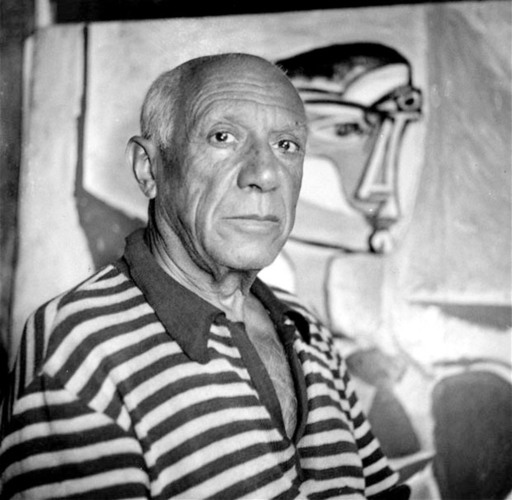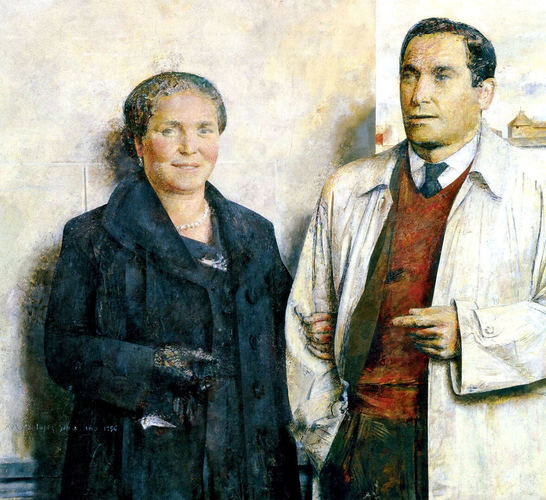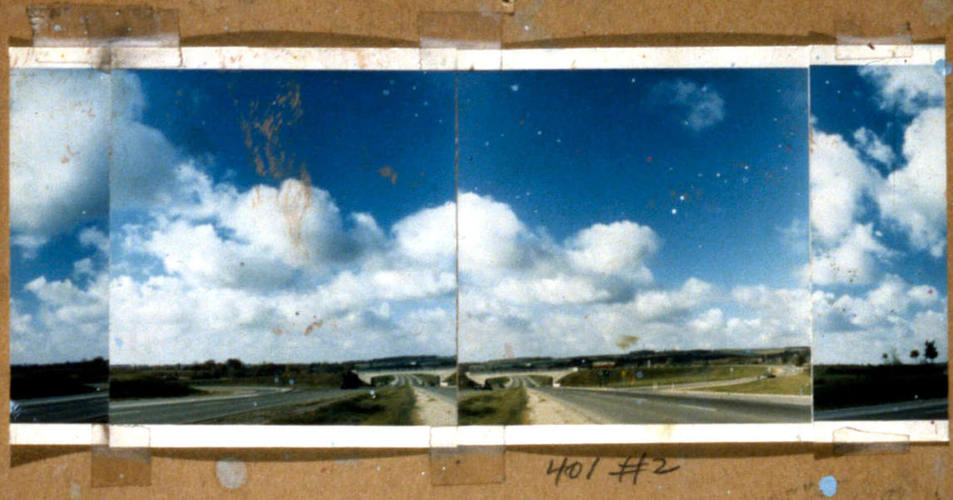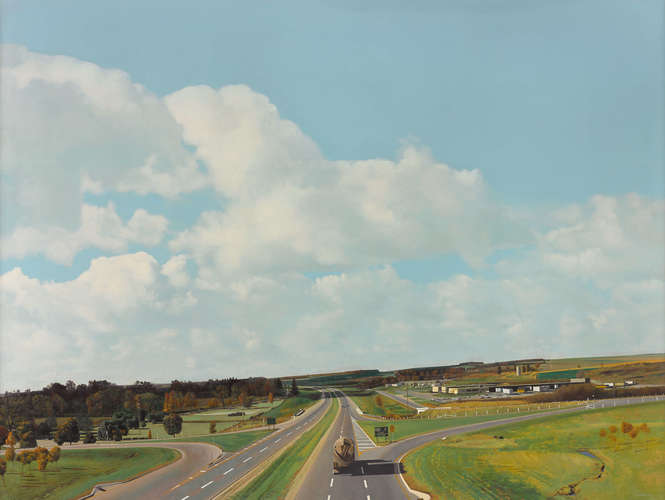Jack Chambers (1931–1978) was a masterly draftsman and painter, and the foundations of these abilities were laid during his five years of study in Madrid. His drawings at this time tended toward detail, and his paintings were tightly controlled. He became expert in depicting both the human figure and landscape. The range of artistic techniques that Chambers learned and practised is part of the paradoxical tension that ran through his life, both as an artist and as a family man. As an artist, he was a “radical classicist,” both a perfectionist and an inveterate experimenter.

Chambers’s artistic journey began as a high school student in London, Ontario. Hungry for more experience as an artist following his graduation, he travelled to Quebec City and Mexico. In 1952 he attended the University of Western Ontario, where he took an English literature course given by professor of English and art expert Ross Woodman. Still searching for a way to become a serious artist, however, Chambers left Western and sailed to Europe from New York in September 1953.

Oil on canvas, mounted to board, 87.6 x 104.1 cm, Centre Georges Pompidou, Musée national d’art moderne, Paris
For a time Chambers wandered: Rome, Austria, and then the south of France. Never shy about going after what he wanted, and keen on learning to be an artist, by his own account he turned up unannounced at the home of Pablo Picasso (1881–1973). Finding the gate locked, he scaled the wall and managed to gain an audience. Picasso advised him to study in Barcelona.
Instead he ended up attending art school in Madrid. Though his route to admission was circuitous, in May 1954 Chambers was accepted to the prestigious, if highly traditional, Escuela Central de Bellas Artes de San Fernando. He began classes in October 1954, excelling in his studies and graduating five years later, in the spring of 1959.

401 Towards London No. 1, 1968–69
Art Gallery of Ontario, Toronto
Chambers embraced Spain, learning the language, converting to Catholicism in 1957 (he was raised as a Baptist), and meeting his future wife, Olga Sanchez Bustos, in 1959. In 1960 he bought a flat in the village of Chinchón, near Madrid, planning to stay. He had his first solo exhibition, at the Lorca Gallery in Madrid, in 1961.
In March 1961 Chambers received a letter telling him that his mother was gravely ill, news that would change his life dramatically. He returned to London, where he was amazed by the burgeoning art scene, led by his soon-to-be close friend Greg Curnoe (1936–1992). After reconnecting with Ross Woodman and other artist friends, Chambers eventually decided to stay in Canada.

Oil on wood, 183 x 244 cm, Art Gallery of Ontario, Toronto
But Chambers had formed a strong bond with some of his fellow students in Madrid, particularly to Antonio López García (b.1936) who, with others from the Escuela Central with whom Chambers worked closely, went on to form a notable group called the New Spanish Realists. He kept in loose touch with these artists throughout his life. Parallels to the realism characteristic of this group can be found in Chambers’s work by 1968, including his iconic 401 Towards London No. 1, 1968–69 and are there in his description of what he called perceptual realism. Like his Spanish contemporaries, Chambers sought a profound reflection on primary sensory experience, not simply a reproduction of it.
This Essay is excerpted from Jack Chambers: Life & Work by Mark A. Cheetham.
 Karen Tam’s Autumn Tigers
Bridging Past and Present: Invisible Made Visible
By Imogene L. Lim, PhD
Karen Tam’s Autumn Tigers
Bridging Past and Present: Invisible Made Visible
By Imogene L. Lim, PhD
 The Frontier Portraits of C.D. Hoy
A Chinese Canadian Photographer’s Tribute to His Community
By Faith Moosang
The Frontier Portraits of C.D. Hoy
A Chinese Canadian Photographer’s Tribute to His Community
By Faith Moosang
 Interrogating Identity
Suzy Lake explores the role of photography in shaping how we understand and see ourselves
By Erin Silver
Interrogating Identity
Suzy Lake explores the role of photography in shaping how we understand and see ourselves
By Erin Silver
 An Emboldened Artist
How Oviloo Tunnillie achieved rare international acclaim as an Inuit female sculptor
By Darlene Coward Wight
An Emboldened Artist
How Oviloo Tunnillie achieved rare international acclaim as an Inuit female sculptor
By Darlene Coward Wight
 Painting the Cultural Mosaic
William Kurelek traversed the country in a quest to capture its diverse inhabitants
By Andrew Kear
Painting the Cultural Mosaic
William Kurelek traversed the country in a quest to capture its diverse inhabitants
By Andrew Kear
 Domestic Discontent
Mary Pratt’s poetic scenes of home life are praised for their political edge
By Ray Cronin
Domestic Discontent
Mary Pratt’s poetic scenes of home life are praised for their political edge
By Ray Cronin
 A New Vision of the North
Annie Pootoogook’s art offers unprecedented insights into the contemporary Arctic
By Nancy G. Campbell
A New Vision of the North
Annie Pootoogook’s art offers unprecedented insights into the contemporary Arctic
By Nancy G. Campbell
 Meetings of Minds
Sorel Etrog found new ideas in collaborative work
By Alma Mikulinsky
Meetings of Minds
Sorel Etrog found new ideas in collaborative work
By Alma Mikulinsky
 Introducing Miss Chief
An excerpt from the ACI’s book “Revision and Resistance”
By Shirley Madill
Introducing Miss Chief
An excerpt from the ACI’s book “Revision and Resistance”
By Shirley Madill
 A Practice of Recovery
An excerpt from the ACI’s book “Revision and Resistance”
By Sasha Suda
A Practice of Recovery
An excerpt from the ACI’s book “Revision and Resistance”
By Sasha Suda
 Decolonizing History Painting
An excerpt from the ACI’s book “Revision and Resistance”
By Ruth B. Phillips and Mark Salber Phillips
Decolonizing History Painting
An excerpt from the ACI’s book “Revision and Resistance”
By Ruth B. Phillips and Mark Salber Phillips
 A Vision for the Future
An excerpt from the ACI’s book “Revision and Resistance”
By Nick Estes
A Vision for the Future
An excerpt from the ACI’s book “Revision and Resistance”
By Nick Estes
 Inside Kent Monkman’s Studio
An excerpt from the ACI’s book “Revision and Resistance”
By Jami C. Powell
Inside Kent Monkman’s Studio
An excerpt from the ACI’s book “Revision and Resistance”
By Jami C. Powell
 The Rule of Chance
Jean Paul Riopelle’s break with Automatism
By François-Marc Gagnon
The Rule of Chance
Jean Paul Riopelle’s break with Automatism
By François-Marc Gagnon
 From Taos to New York
Agnes Martin and the currents of American Art
By Christopher Régimbal
From Taos to New York
Agnes Martin and the currents of American Art
By Christopher Régimbal
 An Artist Blooms
Mary Hiester Reid’s floral aesthetics
By Andrea Terry
An Artist Blooms
Mary Hiester Reid’s floral aesthetics
By Andrea Terry
 The Patriotic Painter
Greg Curnoe’s Canada
By Judith Rodger
The Patriotic Painter
Greg Curnoe’s Canada
By Judith Rodger
 Walking, Stacking, Dancing
Françoise Sullivan’s conceptual 1970s
By Annie Gérin
Walking, Stacking, Dancing
Françoise Sullivan’s conceptual 1970s
By Annie Gérin
 The Extraordinary North
Tom Thomson’s diary of landscape
By David P. Silcox
The Extraordinary North
Tom Thomson’s diary of landscape
By David P. Silcox
 A Champion of Abstraction
Jock Macdonald sought a new expression in art
By Joyce Zemans
A Champion of Abstraction
Jock Macdonald sought a new expression in art
By Joyce Zemans